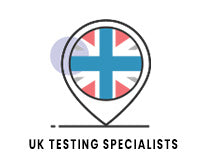Chlorine in Tap Water: Is It Safe? UK Water Treatment Explained

Ever since water was first distributed by networks, the problem of how to keep drinking water supplies free of contamination from harmful bacteria and other microbes has been a problem.
The solution to the problem of water disinfection has almost always been chlorination. Chlorine is a strong oxidising agent and therefore a highly effective disinfection agent capable of killing waterborne disease-causing pathogens such as bacteria, viruses and protozoa.
How is water disinfected?
In its elemental state chlorine is a gas, think toxic green clouds drifting across the battlefields of the Great War. In addition to chlorination with gas, there are several other molecules containing chlorine that are used to keep our water supplies disinfected. In the UK our water may be treated by the:
- Chlorination: Addition of chlorine gas or a solution of hypochlorite
- Chloramination: Addition of a mixture of hypochlorite and ammonia
When hypochlorite and ammonia are combined, they create molecules called chloramines which are also an effective disinfectant of water.
Chlorine and chloramine are both useful disinfectants but have slightly different properties. Chlorine is more reactive and is, therefore, a much stronger disinfectant.
Whilst chloramine is not as potent, it lasts much longer in distribution pipes and does not have as strong a smell or taste as chlorine. Due to their different properties, chlorine is often used as a primary disinfectant and chloramine as a secondary disinfectant.
Chlorination and free chlorine
Chlorine that is added to water at the treatment plant quickly reacts to form hypochlorous acid which is an extremely strong disinfectant. Hypochlorous acid can be formed using chlorine gas or compounds such as sodium hypochlorite (household bleach) or calcium hypochlorite (swimming pool sanitiser).
Cl2 + H2O -> HOCl + HCl
Hypochlorous acid (HOCl) dissociates in water to form hydrogen ions (H+) and hypochlorite ions (OCl-).
HOCl <-> H+ + OCl-
The sum of all the compounds containing chlorine (HOCl and OCl-) is commonly referred to as ‘Free Chlorine’.
Chloramine
When chlorine reacts with ammonia, either naturally present in the water or added specifically, it forms chloramines. In the first instance, monochloramine (NH2Cl) is formed:
NH3 + HOCl -> H20 + NH2Cl.
If further chlorine is added then a second reaction can occur to form dichloramine (NHCl2),
NH2Cl + HOCl -> H2O + NHCl2,
and at even higher levels of chlorination trichloramine or nitrogen trichloride (NCl3) is formed
NHCl2 + HOCl -> H2O + NCl3.
Of these compounds, monochloramine is the strongest disinfectant and trichloramine (or nitrogen trichloride) has an unpleasant taste and smell. The water treatment companies will, therefore, chlorinate to a level that maximises the production of monochloramine and minimises other chloramines.
Does my water company use chloramine?
In the United Kingdom, the drinking water is supplied by several private companies all of whom are required to deliver clean safe water. Regulations do not stipulate how drinking water should be disinfected. Some of the water supply companies add chloramine to all their water, some add chloramine to parts of their water supply and some do not add chloramine at all.

History of tap water chlorination
City water supply networks were pioneered in London where the construction of water supplies began in the 1850s. In 1854, an outbreak of Cholera struck the district of Soho and up stepped physician John Snow.
At that time there was a widely held belief that Cholera was spread through a ‘miasma’ of bad air. John Snow held a contrarian view that cholera was spread through water and plotted the location of cholera cases to deduce the source of the infection as a pump in Broadwick Street. The handle of the pump was promptly removed and cases of Cholera immediately decreased.
Forty-three years later, in 1897, an outbreak of typhoid fever hit the town of Maidstone, Kent. The outbreak affected almost two thousand people causing 132 fatalities. Previously, the only advice offered was to boil the water before drinking but a Cambridge professor named German Sims Woodhead offered a different solution. Woodhead treated the town’s water supply with chlorine in the form of “chloride of lime” what we now know as calcium chloride.
In 1905, another serious outbreak of typhoid in Lincoln was successfully treated with ‘chlorine of lime’ by Alexander Houston. Woodhead’s and Johnson’s actions were initially taken as emergency measures but they paved the way to the large scale chlorination of drinking water that is now in practice throughout the world.
Disinfection by-products
Both chlorine and chloramine can react with naturally occurring organic molecules (such as fulvic and humic acids) to create toxic by-products. Many chlorinated compounds such as PCBs, dioxin and DDT are known to be carcinogenic in humans and are therefore a cause for concern.
In addition to the dangers of ingesting disinfection by-products (DBPs), the volatile nature of substances such as trihalomethanes can enter the bloodstream through the lungs after being inhaled from the steam generated from showers. Chlorine can be removed by a shower filter which contains vitamin C (ascorbic acid).
Chlorine, chloramine and fish
Chlorine and chloramine may be great at killing harmful bugs in our drinking water supply but they are both bad news for fish. Both chlorine and chloramine will react and damage the cells of the fish gills that are exposed to the water. This will cause stress to the fish and at higher concentrations is lethal. Both chlorine and chloramine are commonly removed in three ways:
- Addition of tap water conditioners
- Reverse osmosis
- Carbon filtration
Tap water conditioners have the advantage that they are easy to administer. Conditioners contain sulphur compounds such as sodium thiosulphate that bind tightly with the chlorine, rendering it inactive.
When conditioners react with chloramines they can release ammonia which is highly toxic to fish. Carbon filters are generally much cheaper than reverse osmosis but may have a limited capacity to remove chloramine.

Chloramine T
Perhaps slightly confusingly a product called Chloramine-T is sold to promote the health of fish, particularly Koi. Chloramine-T is an organic compound that is safe for fish but effective in the treatment of gill flukes, white spot, costia, and bacterial gill disease.
Chlorine, chloramine and brewing
Both chlorine and chloramine present problems to brewers. Firstly, the chlorine can taint the flavour of the final product and secondly, chlorine and chloramine can kill the yeast that converts the sugars to alcohol. It is advisable to remove both chlorine and chloramine before brewing.
Chlorine can be removed by:
- Carbon filtration (won’t remove chloramine)
- Pre-filters used with reverse osmosis filtration systems
- Boiling water before brewing (won’t remove chloramine)
- Addition of sodium or potassium metabisulphite (Campden tablets)
The use of Campden tablets is a popular method of treating brewing water as its very quick and effective. One major drawback of Campden tablets is that the sulphites left in the final product can cause allergic reactions to those that are sensitive.

Is chlorinated water harmful to our health?
The addition of chlorine-based sanitisers to drinking water and the consequential reduction of waterborne illnesses is undoubtedly one of the biggest steps forward in public health, but are there any negative health effects?
UK water distribution companies stress that chlorinated water is safe to drink. Drinking water that has not been disinfected is, by contrast, incredibly unsafe.
How can it be that chlorine in the water kills harmful bacteria such as Legionella but doesn’t affect the cells of our body, or the friendly bacteria in our gut?
The arguments presented by the water companies seem to be based on the strength and dilution of the chlorine sanitisers. One might, therefore, conclude that chlorinated water must have some adverse effect on the cells of our body.
A 2020 study conducted across Europe concluded that around 5% of bladder cancer cases in Europe can be attributed to trihalomethanes (THMs), a group of compounds produced as disinfection by-products during the sanitation of drinking water.
Thankfully, chlorine sanitisers can be removed in the home using various water filtration techniques.
Why does my tap water smell like chlorine?
Many people notice that their water smells like chlorine, particularly when running the tap for the first time in the morning or after returning from holiday. This odour is usually caused by free chlorine or chloramines added during the water disinfection process. Chlorine is a volatile compound, and as it escapes from your tap water, it can produce a distinctive swimming pool-like smell. If you've ever wondered why does my tap water smell like chlorine? the answer lies in how recently the water was treated and how long it's been sitting in the pipes. In most cases, the smell is harmless — a sign that your water has been treated to kill harmful microbes — but if it's particularly strong or persistent, using a carbon filter or letting the water stand before use can help reduce the odour.
Removing chlorine from drinking water
Chlorine is volatile and easily removed from drinking water. However, chloramine is more pervasive and difficult to remove. Understanding whether your water company sanitises your drinking water with chlorine or chloramine is important when choosing a water filter.
Free chlorine may be removed in several ways, including:
- Leaving water to stand
- Boiling
- Simple carbon filtration techniques
Chloramine can be removed by specialist activated carbon filter techniques; these are often used as prefiltration steps in some of the more comprehensive reverse osmosis filtration units. Filtered water may have other health benefits as other harmful contaminants may be removed.
Conclusions
Chlorinated tap water has brought about a major step forward in public health.
UK water companies sanitise their water by adding either chlorine or chloramine and carefully monitor the chlorine level. Many water supply companies have recently switched to using chloramine as it lasts longer in supply pipes and imparts less of a chlorine taste.
The interaction of chlorine and organic matter can lead to the production of disinfection by-products (DBPs). Recent studies in Europe have linked certain DBPs with incidents of bladder cancer suggesting that they increase cancer risk.
Chlorine in tap water can be easily removed at the tap using an activated carbon filter. Chloramine is more difficult to remove and can cause problems with brewing, baking, home dialysis, and in aquariums. Some people may have allergic reactions to chloramines and would benefit greatly from chloramine removal.




















